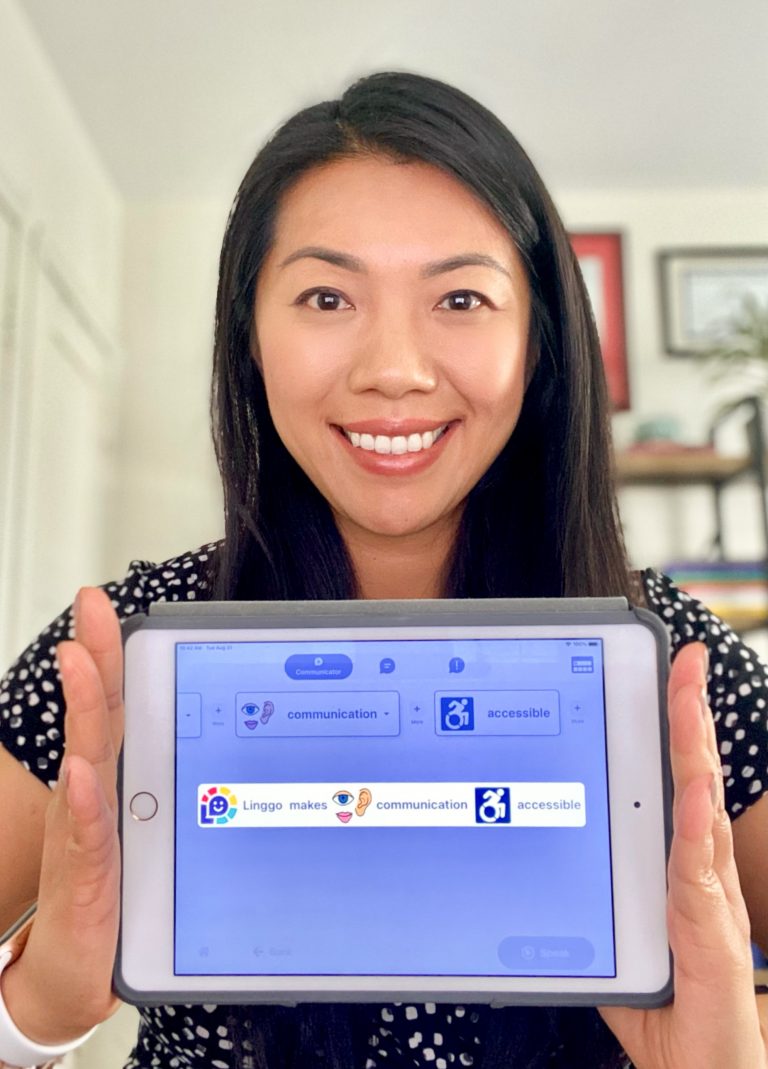Some people need a bit of extra help with communication. Be it through reading or speaking or any form of assistance, some folks benefit from the use of accessibility services, which advance their connections with others and increase their quality of life.
Ling Ly Tan is the founder of one such service. Tan founded Linggo, a software system which promotes sight word reading and speech for people with limited to no speech capacity. This includes people who have autism, dementia, post-stroke aphasia, developmental disabilities, or other difficulties with communication.
“[Linggo] aims to help people who have a hard time communicating [and] reach their full potential with their communicative abilities,” Tan said.
Tan has been a clinician for over 17 years and she primarily works with people with autism and children with developmental disabilities. The majority of children with whom she has interacted had limited to no speech, which often came with challenging behaviour, self-injury and aggression.
Her role as a clinician was to teach them how to communicate rather than resorting to using augmentative and alternative communication (AAC), which are systems that help nonverbal individuals communicate.
“I found that a lot of [the AAC systems] came with their own limitations and I felt that the people that I work with deserve much more,” Tan said.
One of these limitations was the lack of literacy and a focus on only picture-based communication methods.
Tan wanted users to be able to learn how to read to help with their school inclusion and participation in the world, which prompted the unique transition-to-text technology in Linggo. This feature systematically fades out pictures over time so that the user uses words instead of pictures.
In AAC training, the communication partner who communicates with the user must be there to support and help them. While most systems focus exclusively on the user, Linggo is made of two apps: one for the user and one for the communication partner.
Tan has received uplifting feedback on the app from users so far. For example, a therapist using Linggo with their client reached out to Tan saying that the client was making much faster progress than initially anticipated.
Another user learned to read and speak with the system. The app advanced her ability to communicate with others and increased her family’s quality of life because she is no longer as aggressive or self-injurious.
“We’ve had one girl who used Linggo for three months, she was one of the first users and she wasn’t able to read or speak before. After three months, she started speaking and reading over 80 words. That was huge to her mother because her daughter had been using so many different communication systems but none of them were as effective,” Tan said.
Linggo’s advanced technology is expensive; it includes data collection, machine learning and natural language processing, so funding was a large barrier when Tan started the app. She self-funded a lot of Linggo to get it off the ground.
The positive impact it has had on user’s lives has been rewarding and she hopes that it will encourage others.
“When you believe in something that needs to be done, you just do it,” she said. “I hope more women will be able to go after their dreams and make a difference in the world…I hope that [launching an app like Linggo] can inspire more women to do the same.”
Linggo is currently only available on the iOS App Store, however, Tan and her team are completing an Android app so that it can be more accessible on a variety of affordable devices.
“I would say [being able to communicate] is one of the most important things that we need as a human…communication accessibility is what we need to start promoting in our society,” Tan said.

